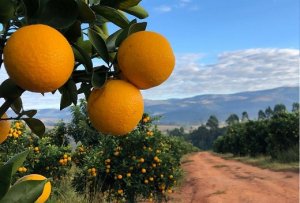 See photos
See photos
Piracicaba, 19th – The third production estimates for the Brazilian citrus belt (São Paulo and the Triângulo Mineiro) in the 2020/21 season, released by Fundecitrus on Wednesday, February 10, indicates that orange supply should total 269.01 million boxes of 40.8-kilograms each. This volume is 6.52% lower than that initially estimated and 30.45% below that in the previous season. This is also the worst annual decrease in all times.
As low supply has been confirmed, orange prices continue firm in the Brazilian market. According to Fundecitrus estimates, 81% of the fruits had been harvested up to mid-January. The harvesting of pear oranges has reached 82% of the volume forecast, and for the late varieties (valencia, folha murcha and natal), 75%.
According to Fundecitrus, the biennial production cycle and the unfavorable weather (drought and high temperatures) in the second semester of 2019 (flowering) and 2020 (fruit-filling stage) led to the current crop failure. The report from Fundecitrus also points that, although rainfall was higher in the citrus belt in December 2020 (8% up from the average), it was lower, irregular and short in January, due to the La Niña phenomenon.
Thus, the average weight of the oranges harvested was lower – usually, 261 fruits fill up a box, meaning that each orange should weight 156 grams, 8% down from the average of the last five crops.
PRODUCTIVITY – Low productivity this season has been majorly linked to late varieties and pear oranges. Thus, with lower volumes, the demand from processors continues high, which is controlling both supply and prices in the first months of 2021.
PRICES – In the market of tahiti lime, supply was high in the first fortnight of February, due to the peak of harvest, however, sales were firm. According to Cepea collaborators, the increase of crushing was leading agents from processors to search for fruits in the in natura market, pushing up quotes in São Paulo. It is important to highlight that the supply of lower quality fruits is high, which is discouraging exports.
On the other hand, orange prices were fading in the first half of the February. Despite the beginning of the month (when workers’ wages are paid) and the low supply of high-quality fruits, low demand was limiting sales. Farmers expect demand to increase when the first oranges harvested are available, since their quality should be higher – however, this is forecast for mid-March only.
Source: hfbrasil.org.br